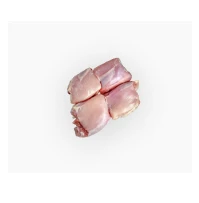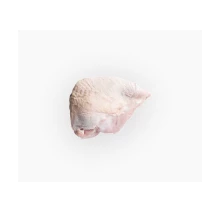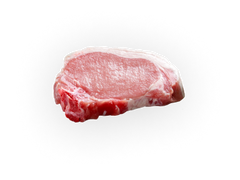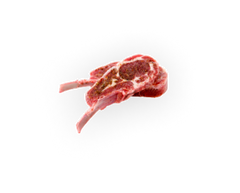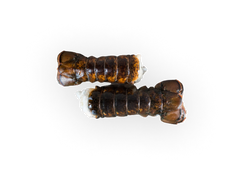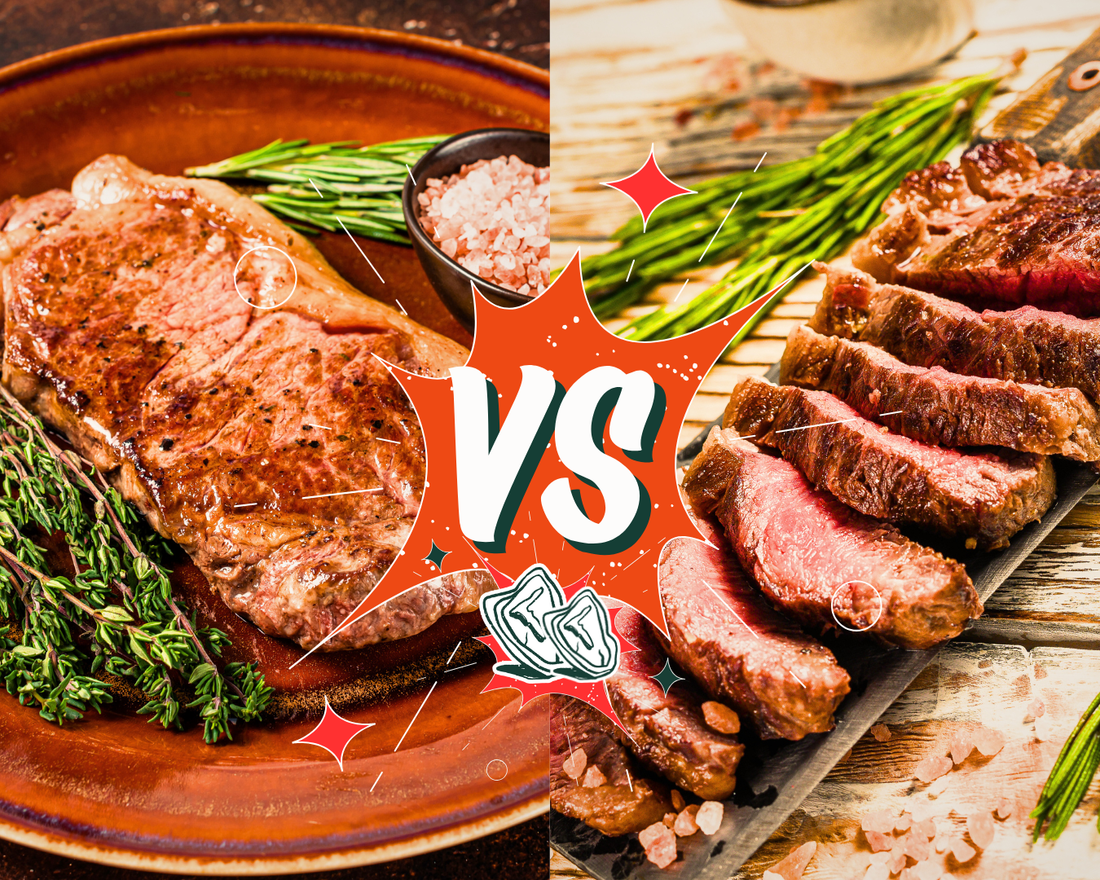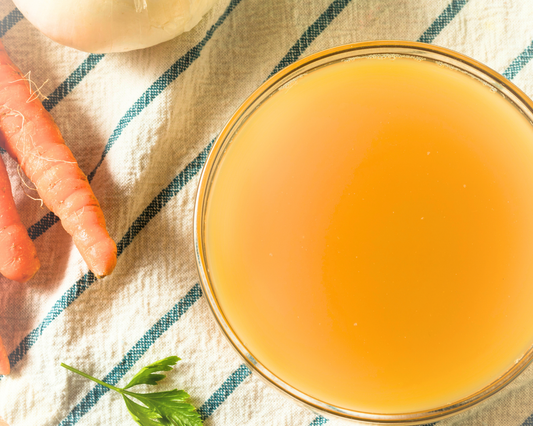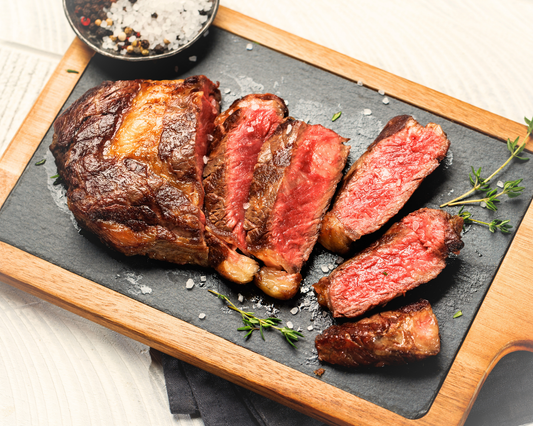When it comes to choosing the perfect cut of beef for your next BBQ or family dinner, two popular options often come up: sirloin and striploin. While both are excellent choices for flavourful, satisfying meals, there are key differences between them that can influence your decision based on flavour, texture, versatility, and cost. In this blog post, we’ll break down the main contrasts between sirloin and striploin to help you choose the best cut for your needs.
Understanding the Cuts
What is Sirloin?
Sirloin is a versatile and budget-friendly cut that comes from the rear back portion of the cow, just in front of the round. It's often divided into top sirloin and bottom sirloin. Top sirloin is the more tender and desirable of the two and is frequently sold as steaks.
What is Striploin?
Striploin, also known as New York strip or strip steak, comes from the short loin of the cow, located behind the ribs and in front of the sirloin. It’s considered one of the premium cuts for its perfect balance of tenderness and bold beefy flavour.
Flavour Comparison
Sirloin: Lean and Beefy
Sirloin steaks are known for their robust, beef-forward flavour. While they’re leaner than some other cuts, they still offer enough marbling (fat within the muscle) to deliver satisfying flavour when cooked properly. However, because it’s a leaner cut, sirloin can sometimes lack the buttery richness found in more marbled steaks.
Striploin: Rich and Juicy
Striploin, on the other hand, tends to have more marbling, which adds a richer, juicier flavour. The extra fat contributes to a more luxurious mouthfeel and a deeper savoury taste, especially when seared to perfection on a hot grill. Striploin is ideal for steak lovers who crave a more indulgent bite.
Texture and Tenderness
Sirloin: Firm but Satisfying
Sirloin is firmer in texture compared to striploin. While top sirloin is more tender than bottom sirloin, it still offers a chewier bite than premium cuts. It’s a great option for those who enjoy a steak with some bite and structure.
Striploin: Naturally Tender
Thanks to its location on the animal and the higher fat content, striploin is inherently more tender. The meat fibres are finer and the marbling melts during cooking, creating a soft, buttery texture that many steak lovers prefer.
Versatility in the Kitchen
Sirloin: A Jack-of-All-Trades
Sirloin’s versatility is one of its biggest advantages. It can be grilled, pan-seared, broiled, stir-fried, or used in kabobs. Its firmer texture makes it ideal for slicing thin for wraps, fajitas, or steak sandwiches. It’s also a top pick for meal prepping and weeknight dinners, thanks to its adaptability and value.
Striploin: Best on the Grill
Striploin is best suited for grilling or pan-searing, where its natural marbling can shine. While it’s not quite as versatile as sirloin for mixed dishes, it’s perfect for those moments when you want to serve a steakhouse-quality meal at home. Striploin steaks also benefit from minimal seasoning to let the natural flavour shine through.
Cost Comparison
Sirloin: Budget-Friendly
Sirloin is generally more affordable than striploin, making it an appealing option for families or anyone cooking on a budget. Prices can vary by region and quality, but sirloin typically costs 30–40% less than striploin.
Striploin: Premium Price
Striploin is a more expensive cut due to its tenderness and marbling. If you’re looking for a steak to impress guests or to treat yourself on a special occasion, striploin is worth the splurge. That said, it's still more affordable than ribeye or tenderloin, making it a great middle-ground for premium steak lovers.
Nutritional Differences
Both cuts are excellent sources of protein, iron, zinc, and B vitamins, but there are slight nutritional differences:
-
Sirloin is leaner, with fewer calories and less saturated fat.
-
Striploin has higher fat content, contributing to a richer flavour and higher calorie count.
If you’re watching your fat intake or looking for a leaner option, sirloin might be the better pick. If you prioritize flavour and tenderness, striploin is your winner.
Best Cooking Tips
Cooking Sirloin:
-
Marinate to enhance tenderness and flavour.
-
Cook to medium-rare or medium for best results.
-
Slice against the grain to maximize tenderness.
-
Let it rest for at least 5 minutes after cooking.
Cooking Striploin:
-
Use a simple seasoning (salt and pepper often does the trick).
-
Sear on high heat, then finish in the oven or on indirect heat.
-
Don’t overcook — medium-rare to medium is ideal.
-
Let rest before slicing to lock in juices.
Final Verdict: Sirloin vs. Striploin
Here’s a quick summary to help you decide which cut is right for your next meal:
| Feature | Sirloin | Striploin |
|---|---|---|
| Flavour | Lean, beefy | Rich, juicy, and indulgent |
| Texture | Firmer, slightly chewy | Tender and buttery |
| Versatility | Highly versatile, great in dishes | Best as standalone steaks |
| Cost | Budget-friendly | Premium price point |
| Nutrition | Leaner, fewer calories | More fat, richer flavour |
If you’re looking for an affordable, flexible cut of beef that works in a variety of dishes, sirloin is your go-to. It’s perfect for everyday cooking, meal prep, and feeding a crowd without breaking the bank.
But if you’re aiming to wow at your next summer BBQ or enjoy a steakhouse experience at home, striploin delivers with its tenderness, marbling, and mouthwatering flavour. It’s worth the extra investment when you want a premium dining experience.
Whether you're grilling on a patio, hosting a dinner or enjoying a quiet night both sirloin and striploin have their place on the Canadian plate.
Pro Tip : Look for AAA or Prime graded beef from Canadian-raised cattle for the best quality and flavour. Supporting local producers not only ensures freshness but also contributes to our agriculture industry.

